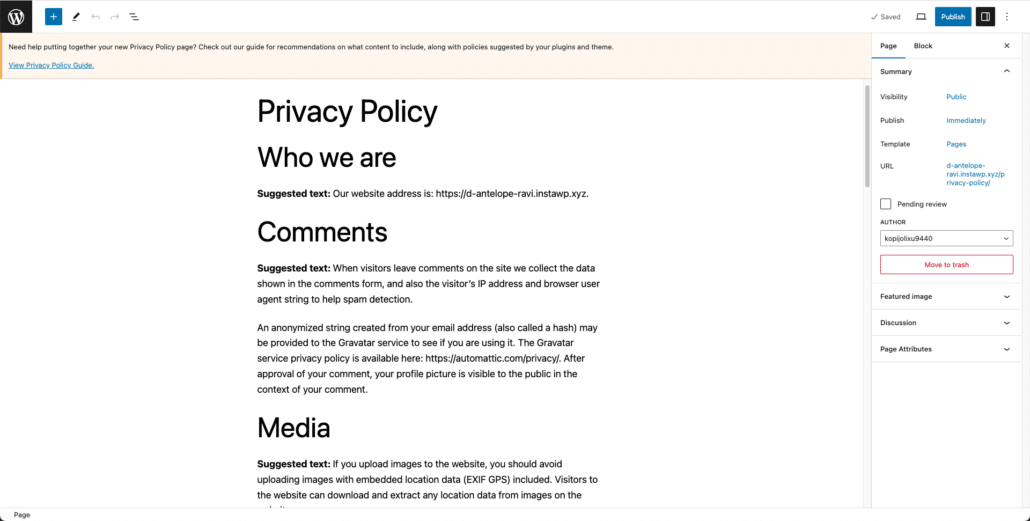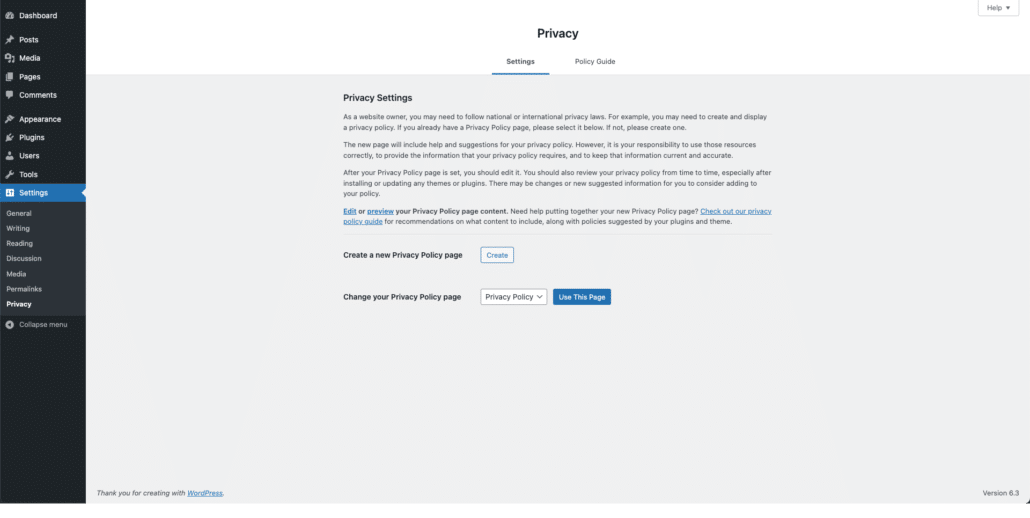With privacy legislation being developed in regions around the globe, virtually every website is required to publish a Privacy Statement that describes their dealings with personal data. If you are using WordPress, publishing your Privacy Policy to your website has become relatively easy.
Drafting a Privacy Policy for your WordPress website
When setting up a fresh WordPress installation, you might notice that WordPress includes a template for a basic Privacy Policy. It contains some essential headers and suggested texts, but as we’re not all lawyers, one would easily get confused and forget essential information that is legally required.

Luckily, the strength of WordPress is that there is a plugin for almost every task. Before we developed Complianz, as webdevelopers we were facing the same issue that our clients needed a Privacy Policy, but were not prepared to hire legal council to draft this legal document. As a Privacy Policy should be tailored to your website, using a WordPress plugin is a convenient solution to draft a Privacy Policy and keep it up-to-date. For further information on what a Privacy Policy is and what it should contain, please refer to our dedicated article.
Selecting your WordPress Privacy Policy Page
Once you have hired a lawyer to draft your Privacy Policy or used a plugin to generate the legal document, you can mark this page as your Privacy Policy. A large selection of plugins integrate with this feature to link to the Privacy Policy whenever relevant. For example, WooCommerce will use the Privacy Policy link as part of the checkout page. You can find this setting under WordPress settings -> Privacy.
Complianz also integrates with this WordPress feature, automatically selecting the Complianz-generated document as the site’s Privacy Policy.

